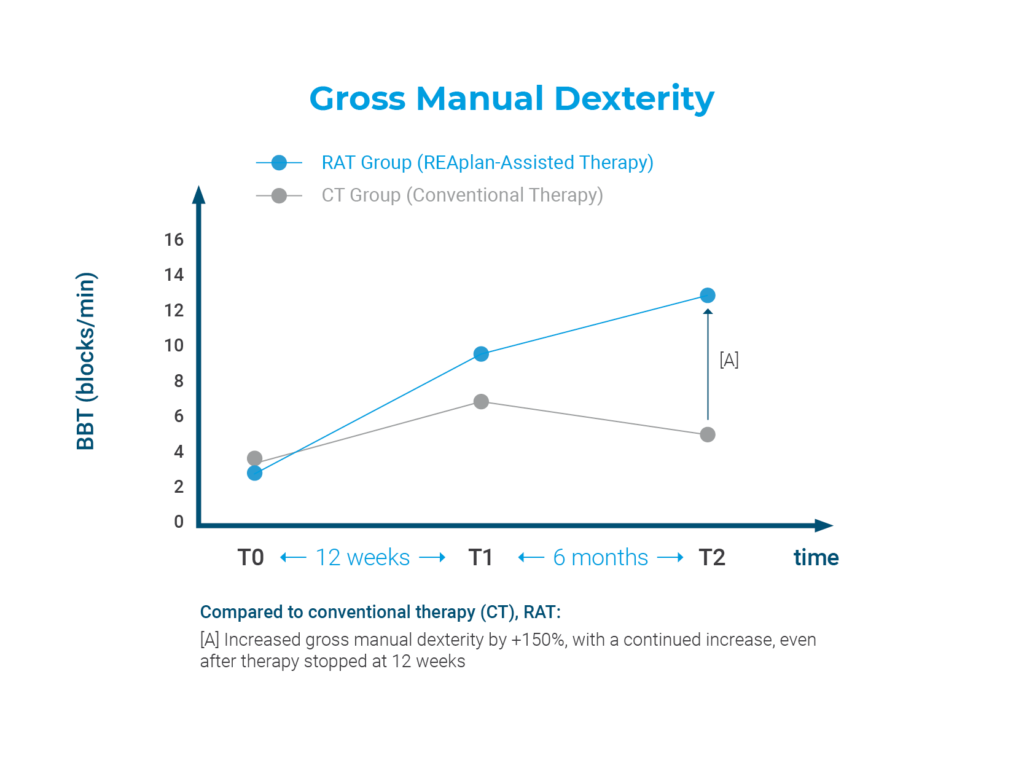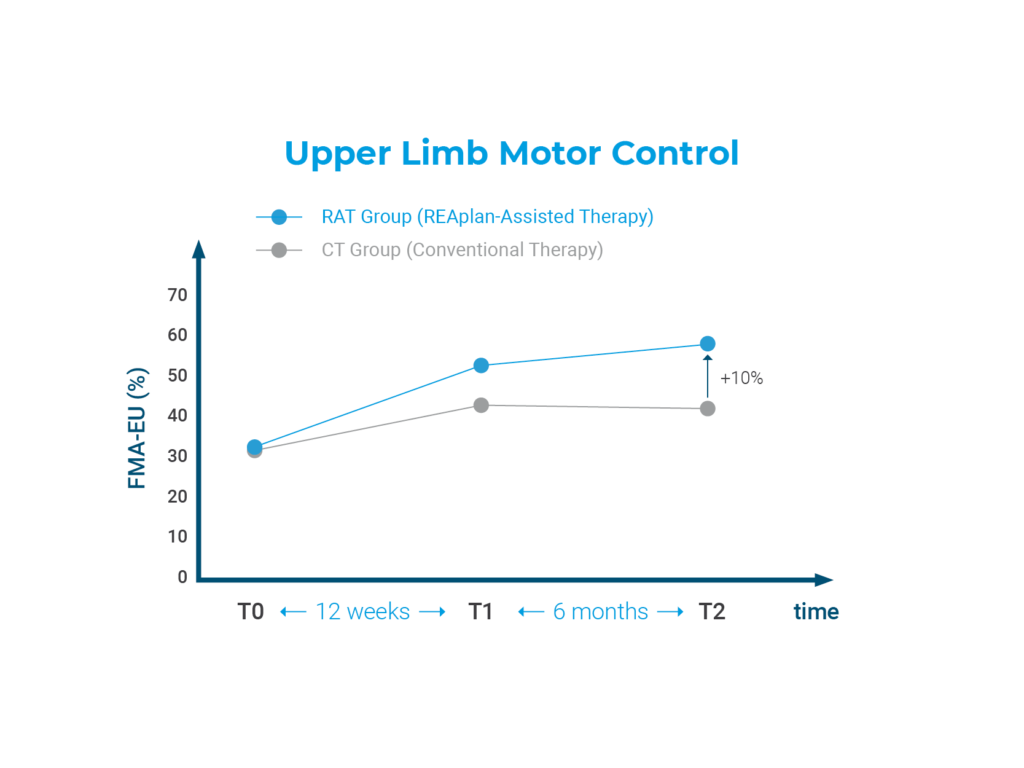Upper Extremity Robotic Rehabilitation
REAplan®
Robot assisted upper limb rehabilitation to enhance functional outcomes and return to social participation
REAplan® by Axinesis is an end-effector robot for intensive, auto-adaptative upper limb rehabilitation with inbuilt therapeutic gamification to increase motivation and optimise rehabilitation outcomes.
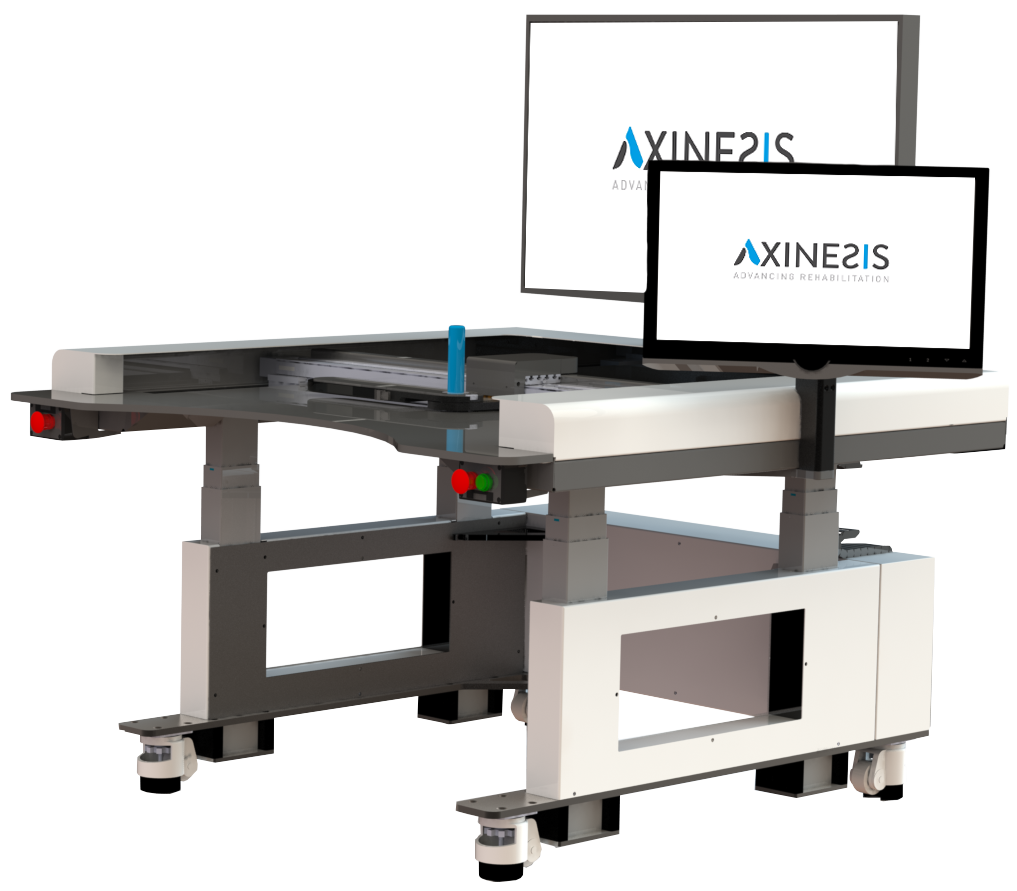
Rehabilitation with end-effector robot
The REAplan® upper limb rehabilitation robot enables intensive therapy of up to 1.000 movements per session, supported by personalized therapeutic gamification. The end-effector structure allows practise of a wide range of functional tasks, without requiring morphological adaptation, making it easy to integrate into your clinical routine.
The REAlab software enables real-time auto-adaptive movement assistance ranging from passive to resisted active. This allows a very early start to upper limb rehabilitation, and ensures therapy adapts to each patient’s motor performance and stage of recovery.
Robot assisted therapy with REAplan® delivers clinically proven superior results compared to standard therapy:
- Increased motor control with a prolonged effect up to 6 months after therapy
- Increased gross manual dexterity with a prolonged effect up to 6 months after therapy and transfer to improved activities of daily living
- Improved social participation
Source: Dehem S. et al. 2019, UC Louvain
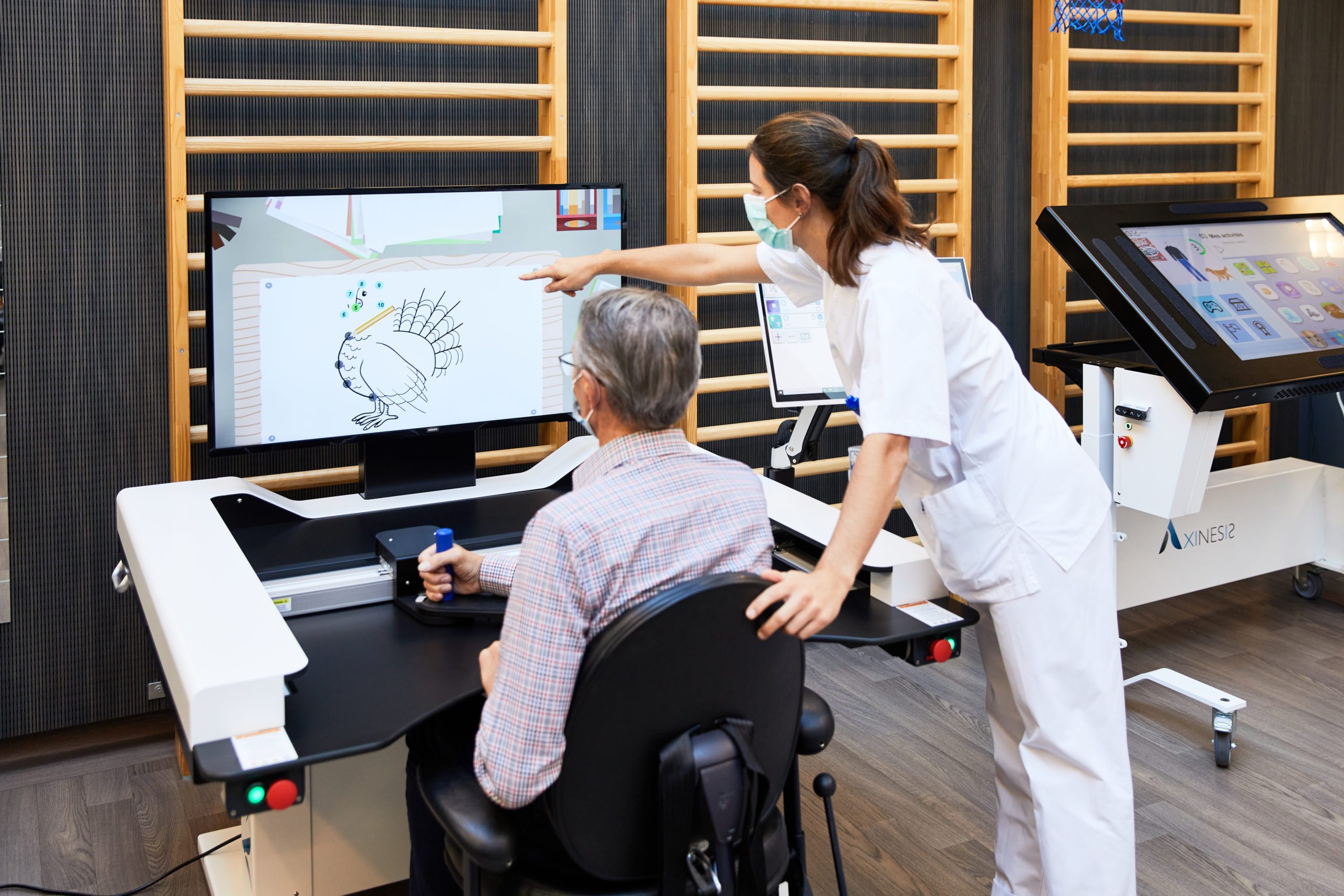
Motivational
The REAplan® robotic rehabilitation device creates high patient engagement with its personalized, user friendly, intuitive graphical interface and therapeutic gamification.
A large range of therapeutic games for patients of all ages are adjustable to their rehabilitation needs and adapt automatically to their progress. This encourages active participation in therapy and prevents boredom, helping to deliver better functional outcomes.
Robust and easy to use
With its simple, intuitive platform for both therapists and patients, REAplan® is easy to integrate into your clinical routine. Patients can be quickly set up for robot assisted therapy without any need for morphological adaptations.
REAplan® features a robust workspace that can be easily lifted or lowered to adapt to each patient in standing, sitting, or in a wheelchair.
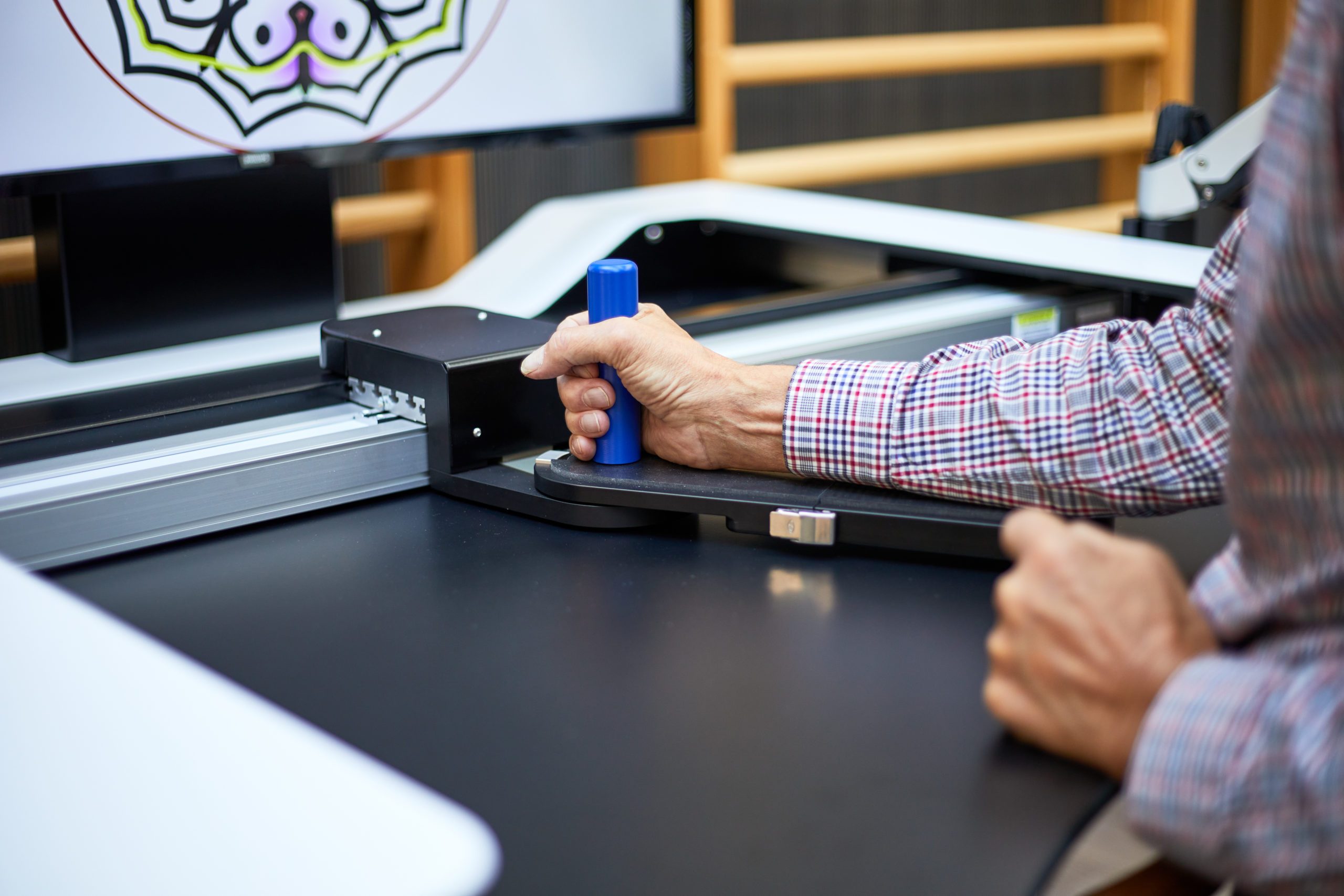
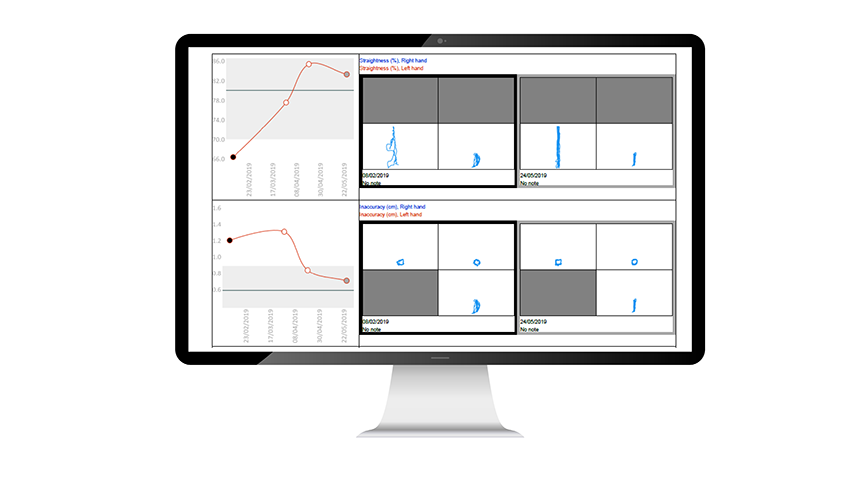
Useful feedback and data
The immersive 43” patient screen provides rich and immediate audio-visual feedback to enhance motivation and motor learning. A dedicated therapist screen allows you to easily configure the device and supervise therapy.
Four assessment apps record and analyse every patient movement, providing detailed and helpful performance information. Reports containing objective and comparable data can be easily downloaded at any time to review progress and plan progression. A hemi-spatial neglect app is currently in development, in collaboration with our academic partners.
Broad indications
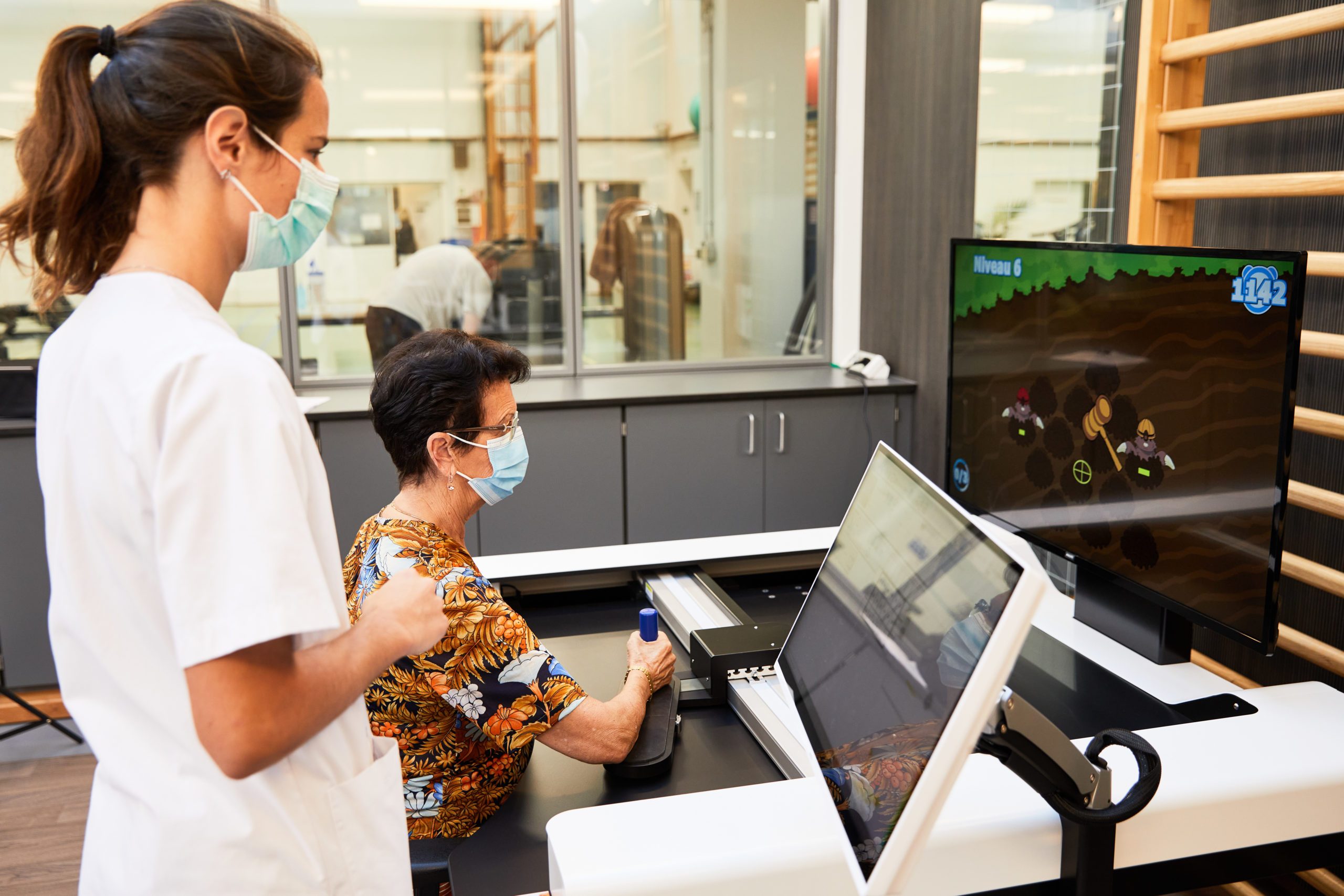
User experiences
Cost-effective
Continuity of care
REAplan® Features
- Encourages interactive movement by carrying the distal end in a horizontal plane to mobilize the arm in 3 dimensions.
- Variable work area allows adaptation to each patient’s progress and recovery of large amplitude movements (upper limbs can be fully extended).
- Suitable for both right-handed and left-handed patients.
- Adaptable distal part, with accessories that enable easy, accurate fitting of the end-effector to every patient.
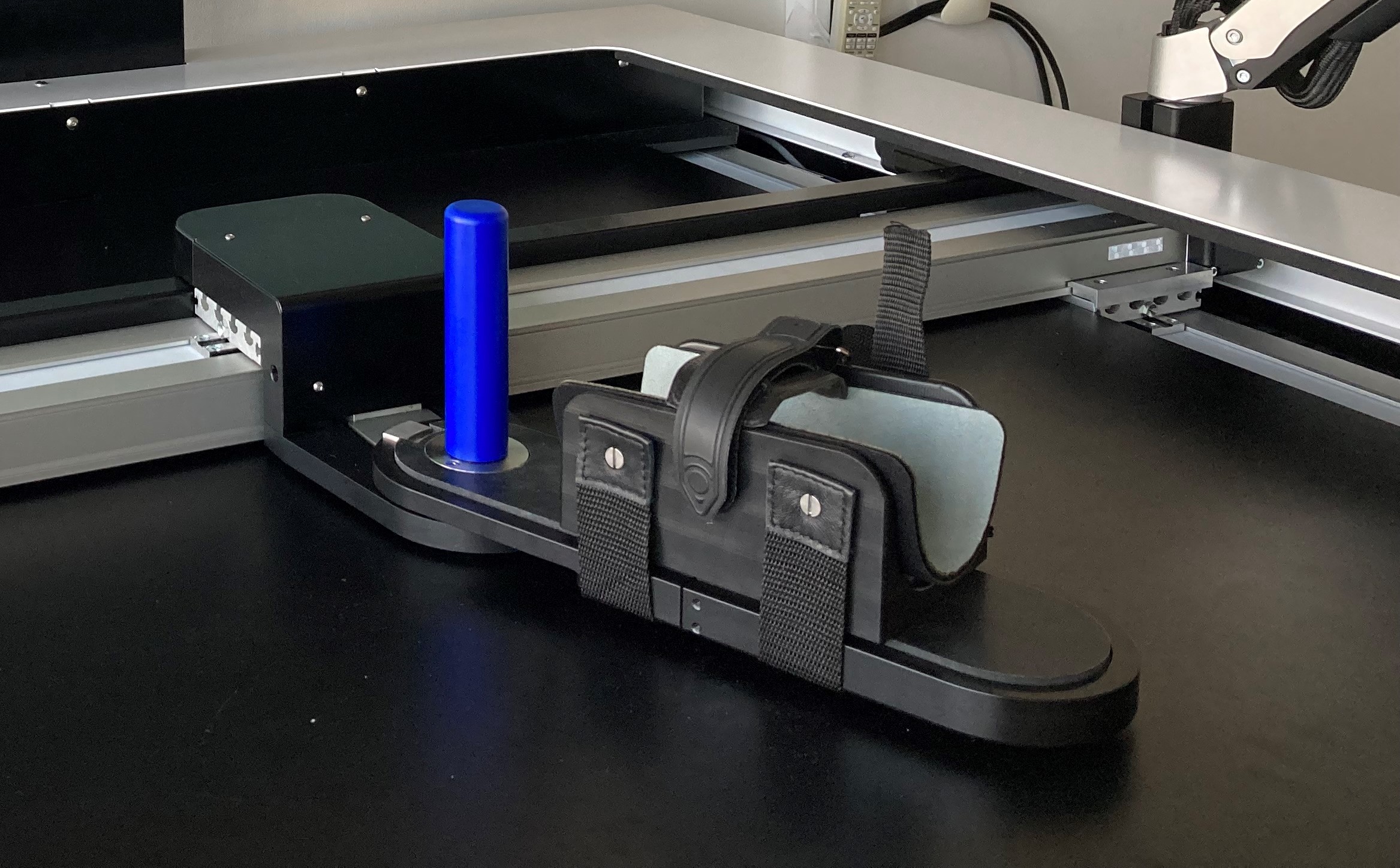
Various accessories make the device accessible and comfortable for all patients:
- Handpieces are available in different shapes, allowing the forearm to remain in a neutral position. The spherical shape is recommended for patients with forearm pronator spasticity, while the cylindrical handpiece is advised for patients with no pronator spasticity.
- Front-arm support – connected to the distal effector, this supports the patient’s arm throughout the exercises.
- Shell (available in different sizes) – to maintain upper limb balance and stability during the session, this dissociable part of the forearm support may be used depending on the patient’s condition.
- Glove (available in different sizes) – this can be used to support the patient’s hand while performing the exercises. It should be used for patients with finger flexor weakness that prevents them from actively holding the handpiece.
